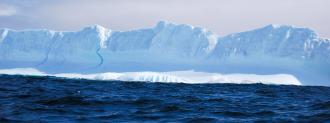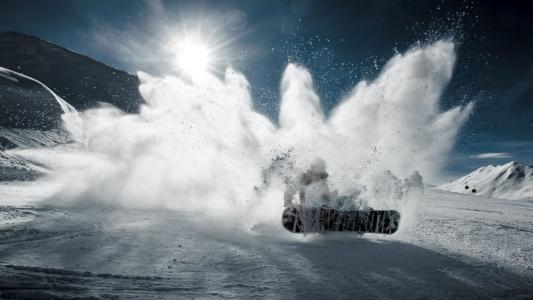Here’s another wild proposal for the list of fantastic — but fantastically interesting — geoengineering solutions to climate change: coating young Arctic sea ice with a layer of reflective glass powder.
The dazzling white coloration of Arctic sea ice does more than provide drama to one of the most dynamic climes on Earth; it actually serves as something of a giant solar mirror, reflecting the sun’s rays back into space.
According to the National Snow & Ice Data Center, Arctic sea ice reflects over 80% of the sunlight that strikes its surface, which helps keep the pole cool. The colder temperatures maintained at the poles impact global climate, according to the NOAA, and the shrinking ice cover also changes sea currents.
As that brilliant blanc begins to melt (and it is melting), darker sea water takes its place, absorbing more sunlight, and warming the ocean — until the Arctic sea ice is gone and the world is irrevocably changed.
“We’re trying to break (that) feedback loop and start rebuilding,” engineer Leslie Field, of the non-profit Arctic Ice Project, told the BBC.
Her idea hinges on restoring some of that reflectivity to the ice.
Arctic sea ice needs to build up over years to become white as sunscreen; young ice is thinner and darker, the sea showing through the slushier surface. This ice absorbs more sunlight and melts away, preventing ice from making a comeback.
Field’s idea, per the BBC, is simple in concept — but complex to execute. A reflective material sprinkled atop young Arctic sea ice could potentially deflect enough sunlight to allow the ice to survive the summer, continue to build, and eventually help restore the reflective caps.
In a paper and presentation delivered at the American Geophysical Union Fall Meeting in 2019, Field estimated the technique, deployed across the Arctic, could achieve a 15-20% increase in sea ice concentration and 1.5°C cooler temperatures across much of the North Pole.
Silica, naturally occurring in sand and used to make glass, was Field’s choice. According to the BBC, Field found a company to produce tiny, hollow beads, thinner than a human hair and designed to float (although some, inevitably, sink).
Field has been scattering the silica powder over lakes and ponds in Canada and the U.S. for the past ten years. There’s been some positive results; in Minnesota, a layer of the powder improved the reflectivity of pond ice by 20%.
Field’s plan is to use the silica powder only in certain fast-melting, at-risk areas — the BBC names the Fram Strait off Greenland as a potential target. (Sorry, but as cool as a sea of glass would be, that’s not the endgame.)
Geoengineering always poses risks, however. Some are obvious: what happens if animals ingest the silica? Since silica is already abundant in nature, Field told the BCC, it should be safe for animals.
The beads are similar in size to some plankton’s food source, as well, University of Victoria ecologist Karina Giesbrecht told the BBC. It’s possible plankton could eat them by accident, inadvertently starving themselves.
There’s mechanical concerns, too, over how to actually make this work.
“If you put down the silica beads in an area of fast-moving ocean currents, notably the Fram Strait, they will be quickly dispersed,” Mark Serreze, a climate scientist who directs the US National Snow and Ice Data Center, told the BBC.
It’s certainly an ambitious solution, as geoengineering is wont to be. But on a scale of plausibility, from carbon capture to stellar engine, reflective silica powder on Arctic sea ice falls a bit closer to the former.






